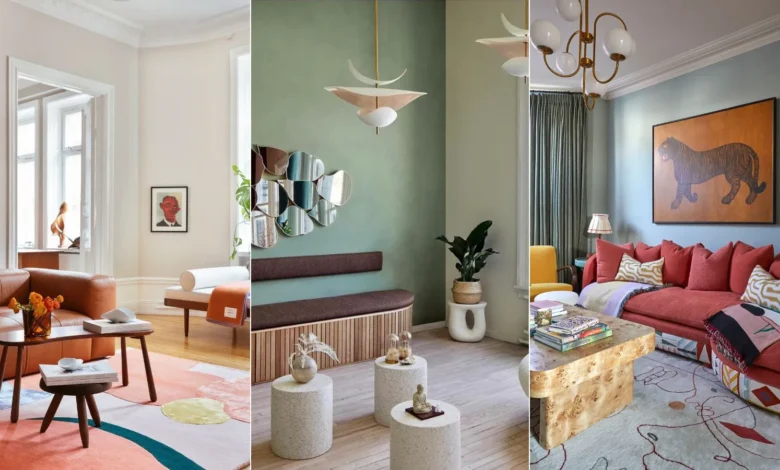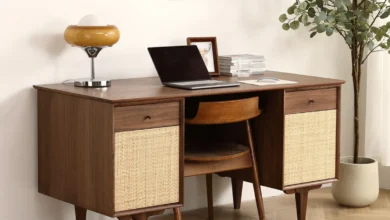Retro Revival: Vintage Furniture Styles Making a Comeback

Every era leaves behind a rhythm and a feeling that stays alive in memory. In today’s restaurants, that memory has taken physical form again. Retro restaurant furniture has returned, not as imitation, but as a conversation between past and present. The curved edges, brass fittings, and textured upholstery that once filled mid-century cafés are being reimagined in dining rooms where nostalgia meets innovation.
This revival speaks to something deeper than aesthetics. Guests crave warmth, familiarity, and authenticity. They want to sit in spaces that tell stories, not just showcase design. When a diner rests on a polished wooden chair with flared metal legs or leans into the soft embrace of a tufted leather booth, they feel connected to a time when craftsmanship mattered.
Restaurants have learned that retro design is not simply about looking back; it is about rekindling an atmosphere that feels human.
A Return to Character and Craft
Minimalism is popular in modern interiors, but too much of it may make a room feel cold. Old furniture brings back individuality. The small curvature of a tubular steel chair or the glitter of a brass footrest tells a narrative of hands that worked hard to make something. Guests react to these signals without thinking. Because the furnishings around them is familiar, they feel at home.
Owners of numerous eateries are combining old-fashioned artistry with new technology. Metal restaurant chairs with a vintage look include welded joints and curved backrests. They are also powder-coated to prevent them from deteriorating. The booths are composed of sturdy fake leather and eco-friendly padding, so they are comfortable and stylish at the same time.
The mix of good design and long-lasting materials has made vintage-inspired furniture more than just a trend. It has become a sign of honesty and a reminder that good work never goes out of style.
The Allure of Mid-Century Simplicity
Few movements have shaped hospitality interiors as strongly as mid-century modern design. Its clean lines, organic shapes, and subtle contrasts continue to influence how restaurants think about space. The focus is on simplicity, but not emptiness. Every detail serves a purpose.
Metal and wood remain central to this style. Chairs with slender steel legs and curved wooden seats balance lightness and comfort. Booths upholstered in earthy tones like olive, sand, and terracotta complement concrete floors and soft lighting. The result is a setting that feels both grounded and elegant.
Designers are also reviving materials once considered outdated. Wicker, rattan, and textured fabrics now appear alongside smooth steel frames, creating layers of contrast that engage the eye. In the right hands, mid-century simplicity becomes dynamic again.
Lighting completes the experience. Pendant fixtures with round glass shades and brass accents cast a warm, even glow across tables, bringing out the natural grain of wood and the quiet shimmer of metal. Each meal feels framed by a design that understands emotion.
Industrial Heritage Reimagined
Industrial furniture reminds us of hard work. It came from industries and workshops, which gave it a sense of strength that still appeals to people today. What used to be a functional need has become an aesthetic need.
Furniture for modern restaurants gives this theme a new twist with balance and shine. Reclaimed wood table tops go well with matte steel frames. Rivets, bolts, and welds remain visible but softened by design precision. It looks like a city, yet is also classy, tough, and comfortable.
This style is great for modern restaurants that embrace honesty and openness. A steel-framed bar stool next to a counter made from reclaimed wood shows that the room cares about both endurance and style. It seems honest, simple, and friendly.
Sustainability also goes well with industrial retro design. Many companies repurpose materials from ancient factories or warehouses again, which makes history into something fresh. Every table or chair has a piece of history in it, which gives it both story and substance.
The Comeback of Color and Pattern
Color is emotion, and retro design has brought it back in full. After years of muted tones dominating interiors, restaurant designers are rediscovering the joy of vibrancy. Deep reds, rich greens, and soft yellows now fill dining rooms that once leaned toward grayscale minimalism.
Metal restaurant chairs coated in glossy enamel shades add life without overwhelming the room. Upholstered booths feature geometric stitching and fabric patterns inspired by 1960s diners. Even tabletops are getting a playful twist, with terrazzo, patterned laminates, and tinted glass making quiet returns.
Textures add another sensory dimension. Velvet cushions, faux leather accents, and woven rattan panels invite touch. Each material enhances the sense of comfort and creates a tactile rhythm that draws people in. When design becomes this physical, the dining experience feels more intimate.
Retro color palettes also photograph beautifully, which has made them a favorite for restaurants that thrive on social media presence. The return of bold tones has become both a visual and marketing advantage.
Sustainability Meets the Past
The increasing interest in old furniture fits perfectly with today’s aims for sustainability. Restoring old things or making new ones out of recyclable materials cuts down on waste and honors craftsmanship. The beauty of the past becomes the consciousness of the present.
More and more restaurants are adopting metal and wood furniture that is created in a way that is good for the environment. Powder-coated steel frames last longer and don’t rust, and recycled wood surfaces cut down on the need for new lumber. Some manufacturers even recreate mid-century collections using recycled alloys, proving that sustainability can carry style.
It makes sense that caring about the environment and wanting to bring back old styles go hand in hand. Retro design has always been about things that last. It is much more relevant in today’s market because it now promotes environmental aims.
Knowing that the chair they are sitting in was carefully designed and made with the environment in mind makes the dining experience more enjoyable for guests.
Yesterday’s Design, Tomorrow’s Dining
The return of vintage furniture is more than a trend; it’s a way to celebrate who you are. Every chair, booth, and table brings back feelings from a different time, but they all communicate clearly in a modern way. Retro design helps eateries stand out while still making their premises seem familiar.
When guests sit in a booth that reminds them of the one their grandparents used to sit in, or when they see the subtle shine of a polished metal chair that reminds them of the 1960s, they connect with something that will always be there. These little things don’t only make the place look nice; they change how you remember things.
Restaurants make interiors that make people want to stay, feel, and remember by combining the craftsmanship of the past with the new ideas of today. In a world that changes swiftly, vintage furniture’s peaceful comfort reminds us that beauty may be found in both progress and the echoes of the past.


